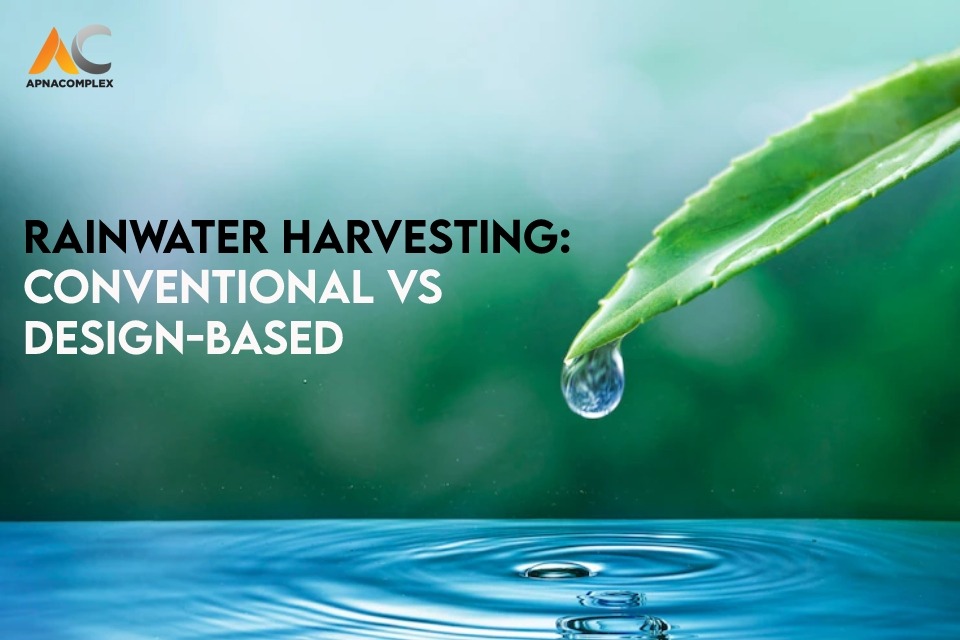Conventional Or Design-Based RWH? Find out What Works Best for You
Product News Design-based RWH, rainwater harvesting, water crisisWith concerns on the climate change crisis and water woes on the rise, the government and civil society have taken a focused approach toward water conservation. It has renewed interest in rainwater harvesting, a traditional form of water management that has been practiced across India since antiquity. While traditional RWH structures evolved according to ecology, the demands of an urban ecosystem led to a more standardised approach.
The resultant conventional structures were uniform in design. With an increasing number of states mandating RWH for gated communities once they reach a certain size, the conventional structures became ubiquitous. But as the water crisis deepens across our cities, current systems are proving to be inadequate. It has led to alternative solutions, including a more design-based scientific approach.
Emergence of design-based RWH structures
With a strong tradition of RWH, India has seen the emergence of new designs to accommodate changing requirements. Currently, we are again in the midst of a revolution in RWH design that is being driven by a severe water shortage in almost all urban areas with depleting groundwater levels. It has prompted a second look at current designs and practices to address different lacunae.
A design-based approach leverages product design to envisage RWH solutions from a different perspective. It reimagines water harvesting to address the specific needs of the consumer, from recharging borewells to improving the TDS of the water supply. As a result, we have seen the inclusion of new materials and technologies.
Conventional Vs Design-Based Scientific approach
Area: The average conventional structure follows a cubical or circular design, measuring 4 x 4 x 4m. This is a significant footprint for projects in urban spaces where space may be at a premium. This has led to the emergence of more innovative designs that can achieve the same goal while occupying a smaller space. For instance, we now have modular structures which are just 1.5m in diameter.
Ease of installation: Conventional structures depend on heavy masonry to be installed. The process can take anywhere from one to two weeks. In contrast, we now have precast modular structures that can be installed in just two days. Unlike the immobile traditional design, modular structures are easy to mobilise and sustain.
Greater flexibility: Most conventional structures are rigid and follow a set design with a single pit structure. Modern designs show a high degree of flexibility as per the site conditions with more choices on filtration devices and structures.
Ease of access: The conventional structure is difficult to access internally, making regular maintenance work difficult to carry out. Design-based models stress on easier access. These structures can have an internal ladder or rung system that makes it easier and safer to carry out regular maintenance work.
Measurable: The conventional RWH structure does not have a measuring mechanism whereby we can judge the TDS quality of the filtered water. Scientific structures emphasise measurable results and will generally specify minimum filtration capacity.
Filtration media: Conventional structures use a combination of sand, pebbles/gravels/metals, carbon, and charcoal. Modern structures have come up with more innovative designs and materials to improve water filtration, such as increasing the number of filtration layers and using different mediums.
Risk of choking: One of the biggest challenges in the conventional structure is the high risk of choking. This is because of the contraction of sediments in a limited space. Modern modular structures resolve this challenge through innovative design that avoids such accumulation.
Easy maintenance: Conventional structures are typically difficult to maintain as internal access is cumbersome. It is time-consuming and requires a special mechanical device. Other than easy access, modern modular structures are also easy to clean without any recurring costs.
If we consider the ascendance of a design-based approach in product design, RWH has been slow to catch on. This gap has been closing rapidly in recent years with the focus shifting towards innovation in design, material, and technology. A design-based approach empowers communities to recharge their groundwater supply, improve the TDS quality of the water, and gain sustainability.
